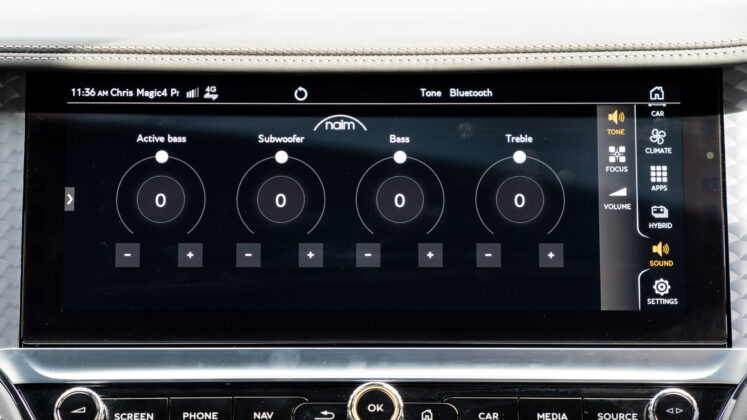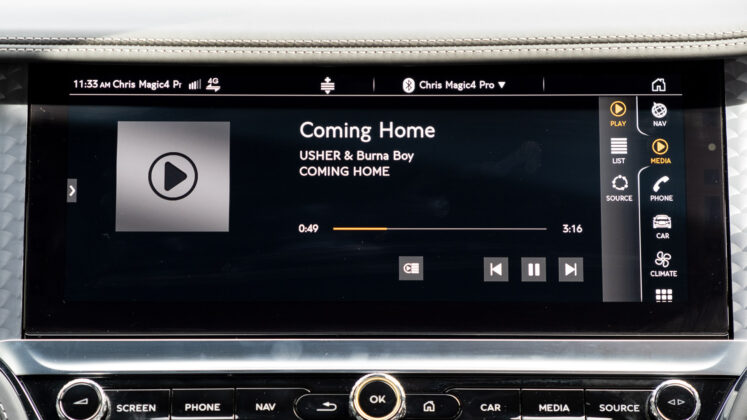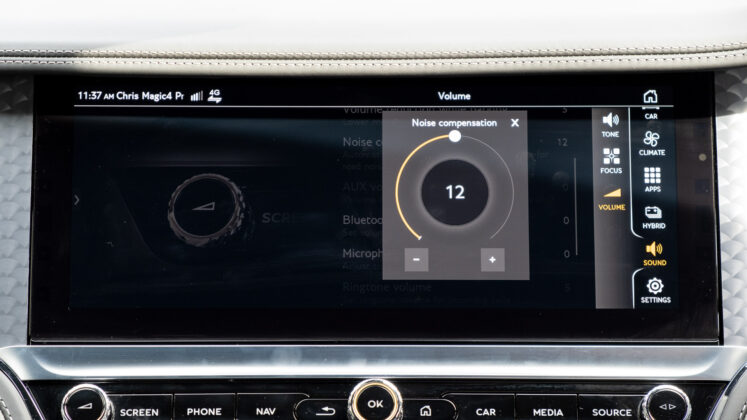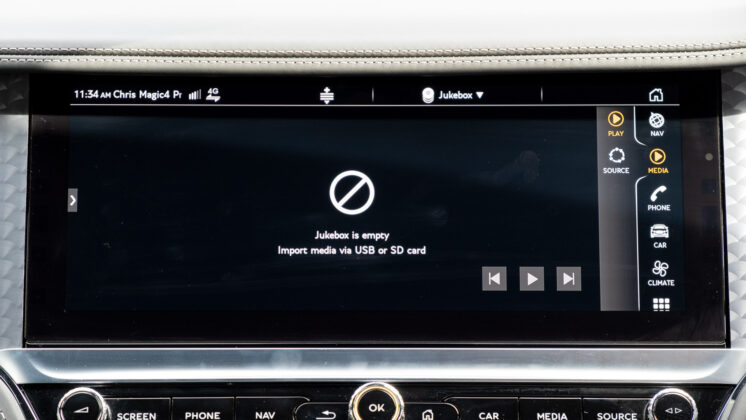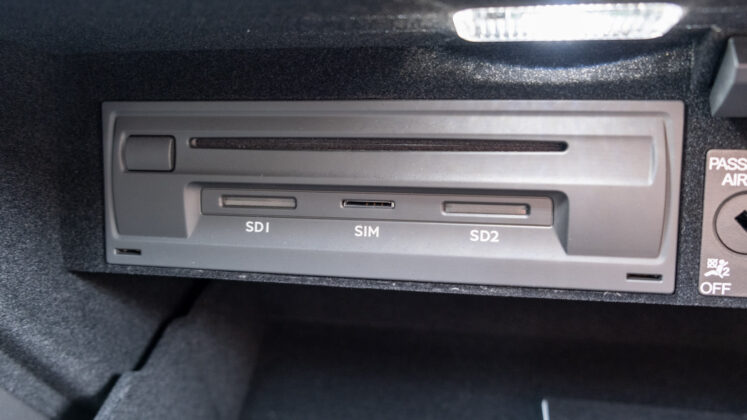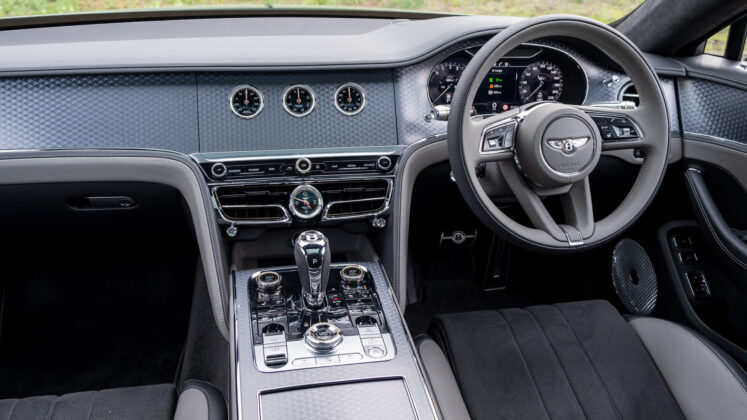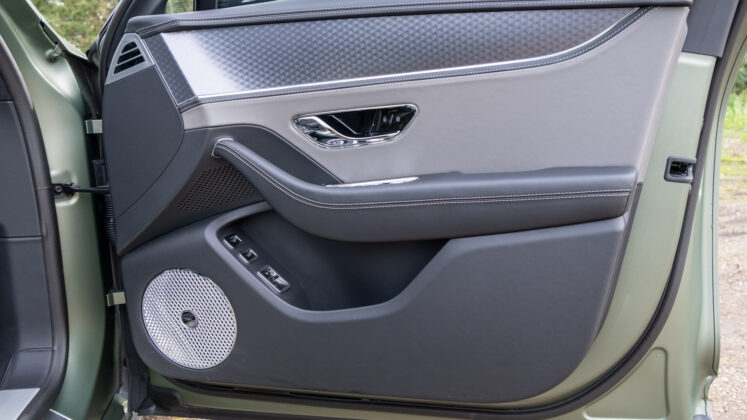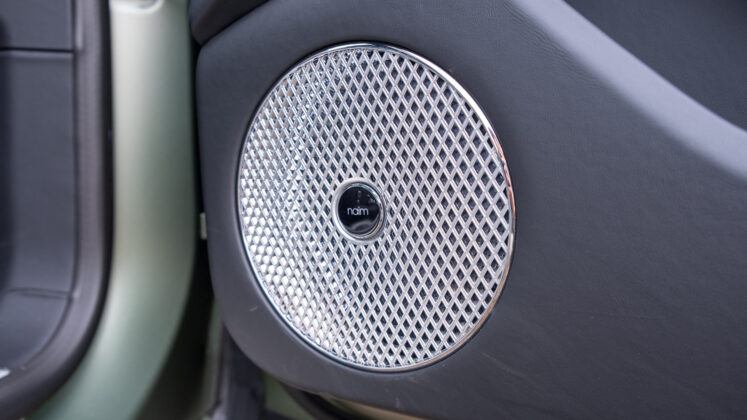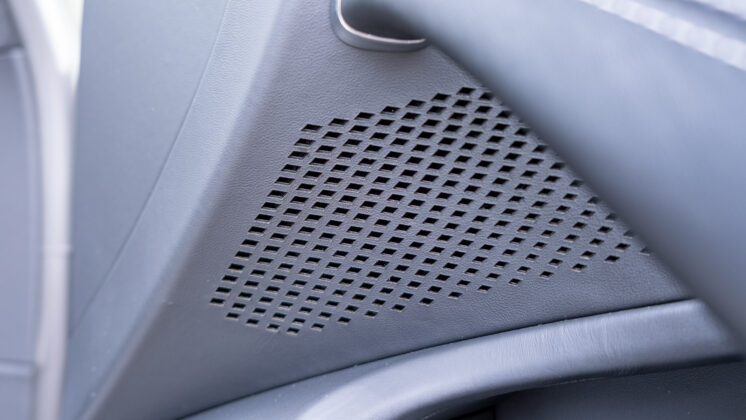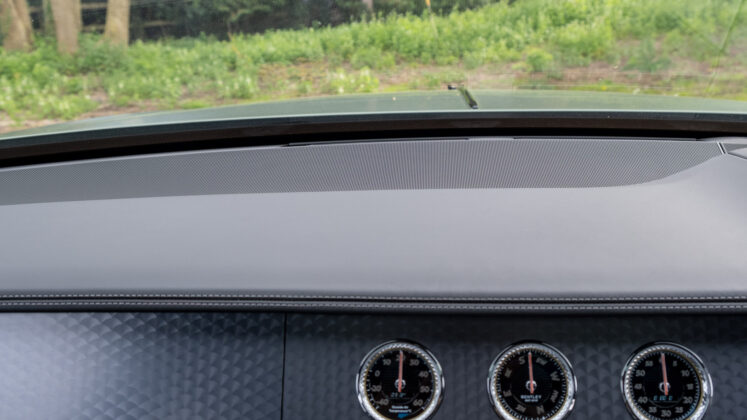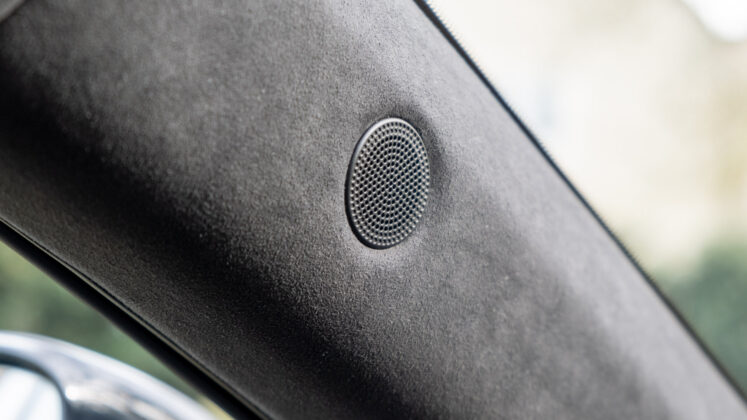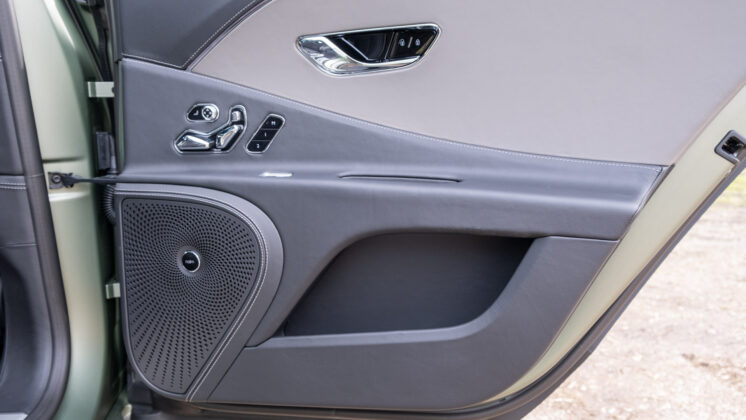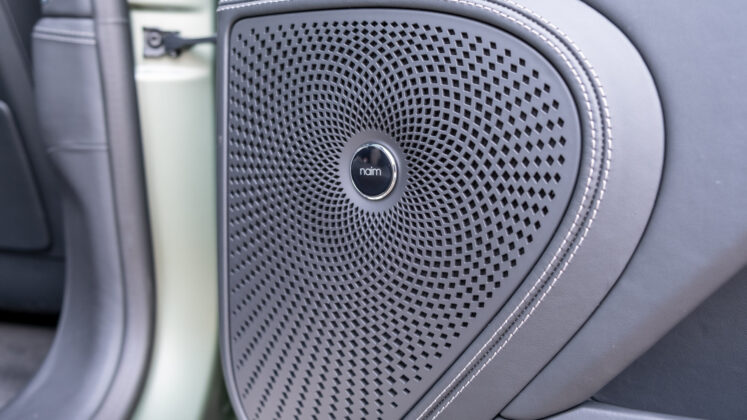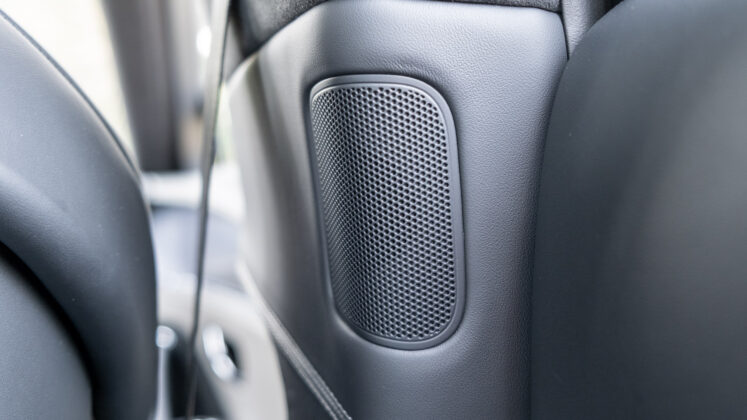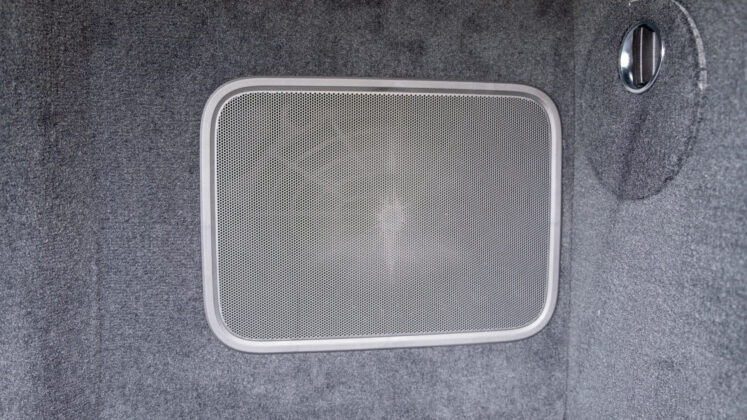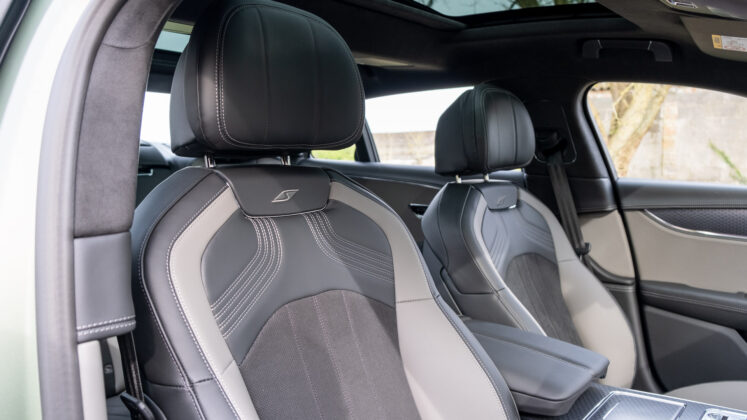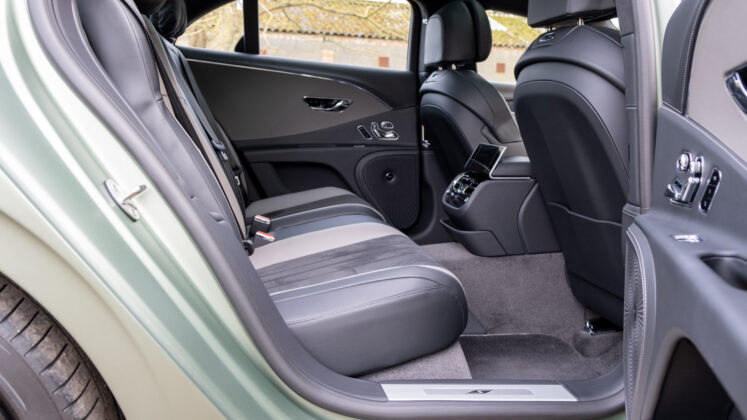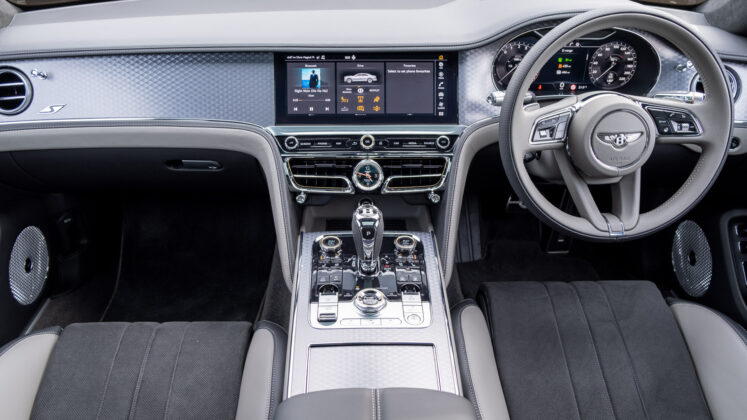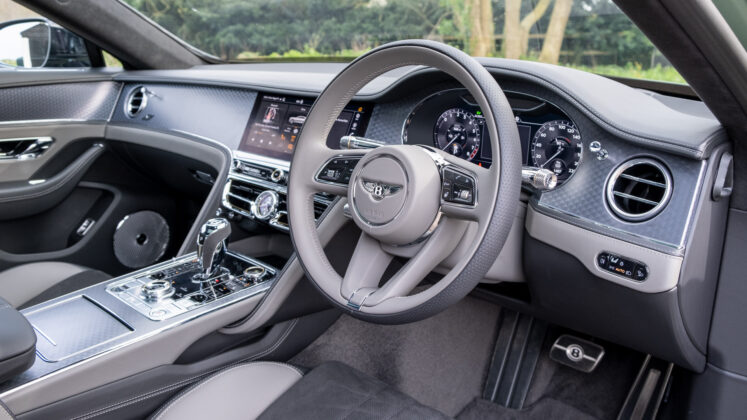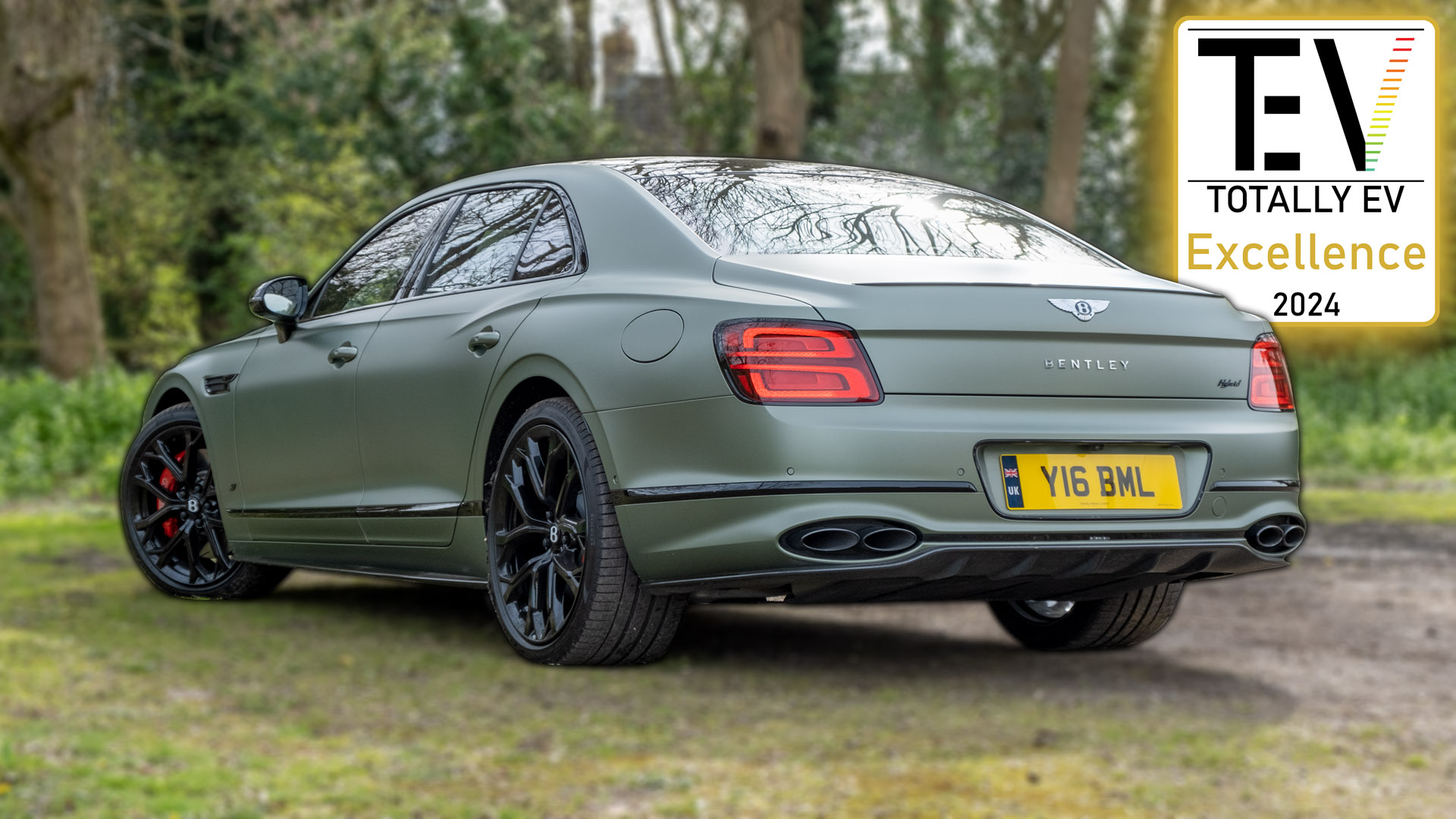The Bentley Flying Spur is a luxurious vehicle that’s also available as a plug-in hybrid (V6 Hybrid). We found it to be supremely comfortable and stylish. However, given its £201,000 asking price, the V6 Hybrid failed to impress us with its lacklustre efficiency, interior quality and the scarce number of standardised features.
When it comes to audio, the British automaker includes its ‘Bentley Signature Audio’ system that sports a 10-speaker 650-watt configuration. Upgrade to the Bang & Olufson (B&O) system and you’ll get 16 speakers that output a staggering 1,500 Watts of power. One can go a step further by opting for the Naim Audio system at £7,210. The latter system that’s on review gets you 21 speakers that produce a whopping 2,200 Watts of power.
Click here to read the full Bentley Flying Spur review
Bentley Flying Spur audio setup
To tinker with the vehicle’s audio settings, one has to navigate to the ‘Sound’ tab on the 12.3″ infotainment system. Here, you’ll find an equaliser, below are our optimal settings:
- Active bass: +0
- Subwoofer: +0
- Bass: +0
- Treble: +0*
- Focus: Enhanced*
- Balance & Fader: Centre
- Noise compensation: 12 (Default)
*Our preferred sound focus in the Naim audio system is ‘Enhanced’, however, there are other options available: Naim driver, Naim front, Naim all, Naim rear, Classic, Digital media, Spoken word, and Enhanced. ‘Naim all’ is another consideration for a wider soundstage, however this does affect mid-range accuracy. Should you opt for this option instead, we’d suggest adding three notches to the ‘Treble’ EQ. In the stock system, you’re limited to three Digital Sound Processor (DSP) modes, only.
To connect to the vehicle’s audio system using your smartphone, Bluetooth is available but only the SBC and AAC codecs are supported. It’s a shame that the higher-quality codecs, such as aptX, aptX HD, LDAC or HWA are all omitted. Thankfully, there are other means of playing back audio from a smartphone at least if you’re on iPhone, as Apple CarPlay is supported over a wired connection. It’s disappointing that it’s not also supported wirelessly. Shockingly, Android Auto is omitted altogether, meaning those running Google’s operating system will need to resort to using a degraded Bluetooth connection instead.
If you want the utmost audio fidelity, however, you can utilise the two full-sized SD card slots (found in the glove compartment) and the built-in 60GB SSD for media playback. Thus, you can playback higher-resolution files no matter the chosen smartphone.
As for media controls, there are physical buttons at the centre of the dashboard and on the steering wheel, and virtual touchscreen buttons that are accessible via the 12.3″ infotainment system.
Read next: Bentley Bentayga audio review: Naim Audio system upgrade?
Bentley Flying Spur audio performance
For a demo of the Flying Spur’s audio system head on over to our YouTube channel.
The Naim Audio system houses 19 speakers and two kinaesthetic shakers, tallying up to 21 speakers that output 2,200 Watts of power. At the front, you have the following configuration: three 80mm Advanced BMR drivers within the dashboard, a single 25mm Super Tweeter within each of the A-pillars, a single 80mm Advanced BMR and 6” x 9” Advanced Bass speaker within each of the front doors, and then there are the Active Bass speakers underneath the front two seats. At the rear, there’s a single 25mm Super Tweeter within each of the B-pillars, an 80mm Advanced BMR and 6” x 9” Advanced Bass speaker within each of the rear doors, a 32mm Transducer and two 80mm Advanced BMR speakers towards the rear parcel shelf. Finally, to complete the system there’s a sideward-firing 6” x 9” subwoofer in the boot.
The inclusion of a subwoofer shouldn’t come as a surprise in a premium vehicle, but the quantity and quality of bass the boot-located speaker delivers is seriously impressive; among one of the best we’ve come across in all the audio systems we’ve tested to date. The precise and eloquent sub-bass extension in the Naim Audio system is faultless and to our ears, didn’t require any tweaking either.
The same could be said about the system’s mid-bass capabilities. Both at the front and rear of the cabin, the woofers found within each of the four doors do a tremendous job of providing excellent accuracy and a healthy slam. You might, however, want to dial down the ‘Active Bass’ EQ if you feel the vibrations at the front of the cabin are a bit too punchy. Nevertheless, with it tailored to our liking, the speakers do a stupendous job of reproducing a tight and controlled low-end response in Justin Timberlake and Fireboy DML’s single titled ‘Liar’.
Similarly, the highs extend marvellously at the other end of the frequency range, with the top-end providing plenty of sparkle without sounding harsh or sibilant. That is, of course, if you don’t add more than a few notches to the ‘Treble’ EQ. Indeed, the 25mm “Super” tweeters within the Naim Audio system provide plenty of energy to both front and rear occupants.
Read next: The best dash cams to mount inside your vehicle
As for the soundstage, the 18 audio drivers within the cabin provide excellent cohesion; remembering that the remaining three speakers are the subwoofer and the kinaesthetic shakers. Here, one can easily distinguish each of the instruments in Tyla and Travis Scott’s single titled ‘Water (Remix)’. Likewise, there’s perfect speed, decay and tonality. The audio presentation is bettered when the system is set to the ‘Enhanced’ DSP mode, which bolsters the overall width and depth. This provides a more engaging sound reproduction throughout the cabin.
However, it’s not as enveloping as the ‘Naim All’ preset, which adds an extra bit of dynamism. The issue is that this mode also presents reverb, which directly affects mid-range accuracy. As such, we preferred listening with the ‘Enhanced’ mode, which effectively provides a wider soundstage over the other listening modes, while preserving a more reference sound.
On that note, the system is let down by its mid-range reproduction – it’s slightly recessed and pushed back, albeit accurate across the frequency range. The inability to alter the mids independently from the highs also leaves much to be desired. It’s baffling that Naim Audio doesn’t provide a multi-band equaliser or at the very least, separate controls for the mids. As a result, one has to accept that the system has a slightly V-shaped sound signature, and while its warm profile won’t deter many consumers, audiophiles might be left a tad disappointed.
Finally, onto cabin noise, the Bentley Flying Spur has one of the quietest cabins we’ve tested to date. There is negligible road noise that creeps in from the tyres and there’s barely any wind noise that can be heard deflecting off the A-pillars and wing mirrors. Using a sound meter we recorded, 35 dBA at a standstill; 51-55 dBA, while driving at 20-30mph; 58-62 dBA, while driving at 40mph; and 65-68 dBA when at 70mph. The latter figure is the most impressive as it shows just how well the acoustic-treated front and side windows perform at higher speeds.
Read next: BMW i7 audio review: The new benchmark for audiophiles
TotallyEV’s verdict on the Bentley Flying Spur’s audio system
On the whole, the 22-speaker 2,200-Watt Naim Audio system comprised within the Bentley Flying Spur is among one of the best that we’ve reviewed. While it does suffer from slightly recessed mids, the perfect lows, highs and soundstage reproduction will leave many, including budding audiophiles, with a smile on their face. Considering the price tag of the Flying Spur, the £7,210 Naim Audio upgrade is a must-have if you’re into audio. As a result, it receives TotallyEV’s Audio Excellence award.
We’d love to hear your thoughts on the audio system in the comments section below or via social media; we’re on: YouTube, Instagram, Facebook, X and LinkedIn.

